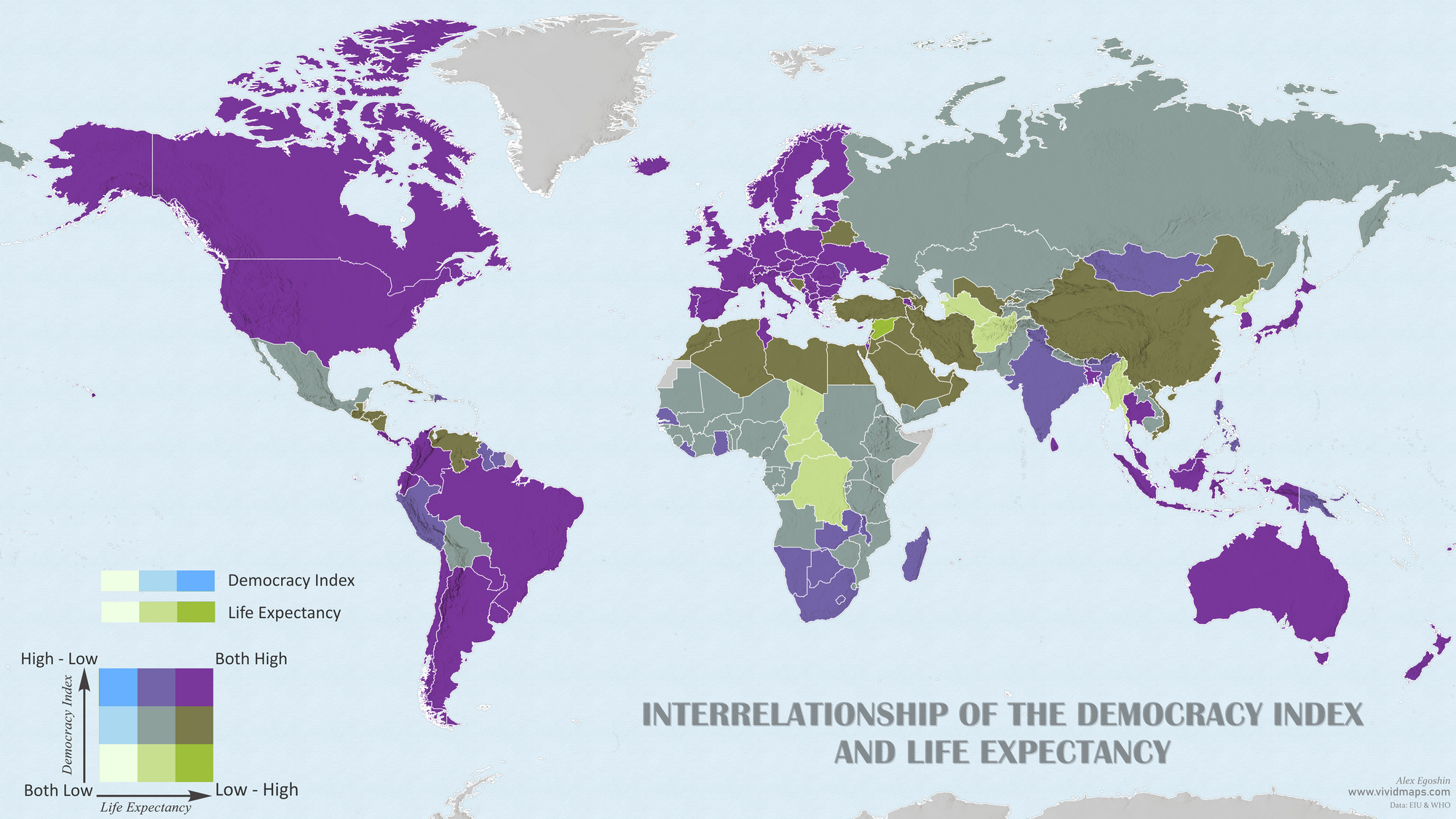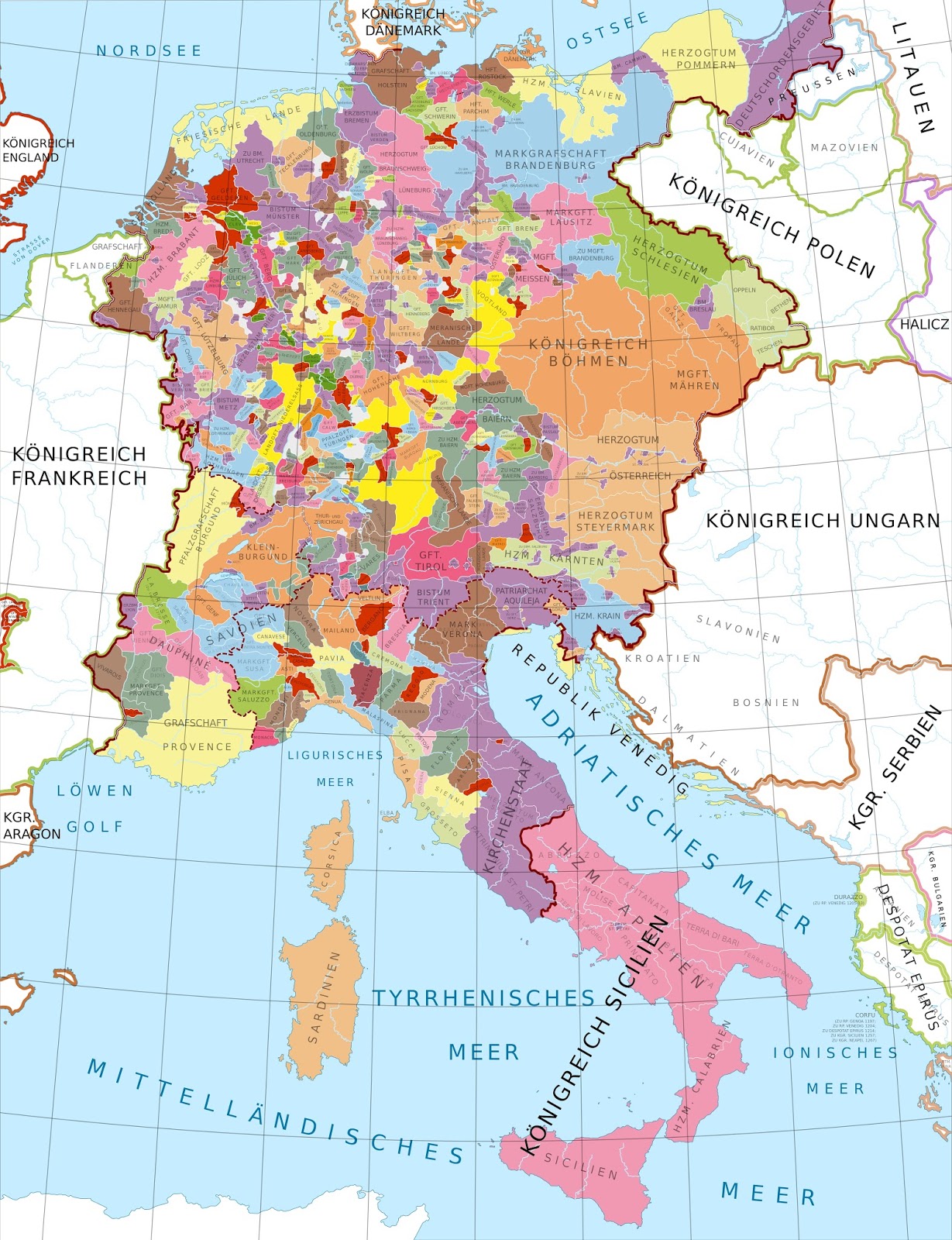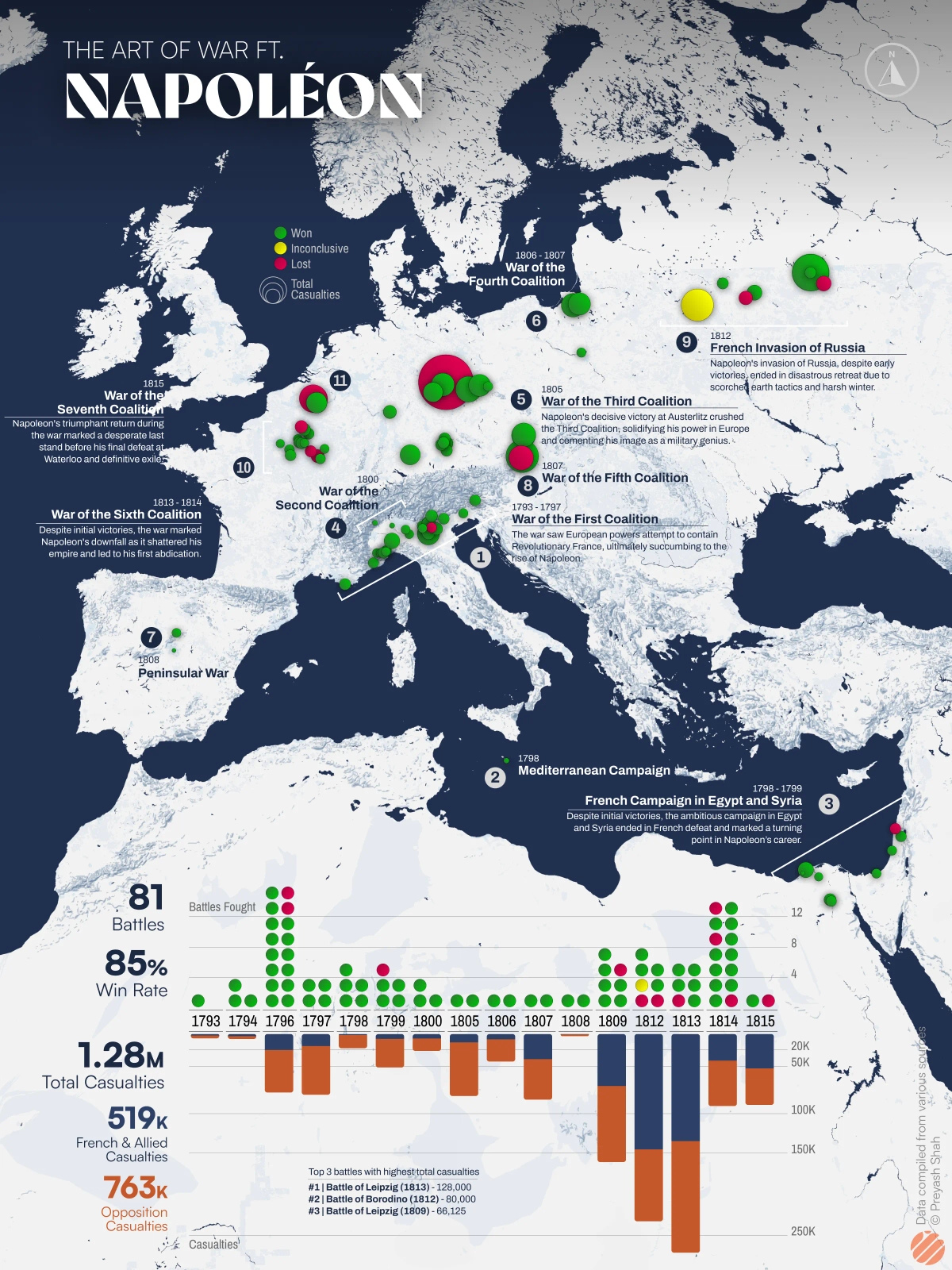The Ephemeral States of the Napoleonic Period
With a laurel crown upon his head and the Grande Armee at his command, Napoleon Bonaparte, Emperor of the French, led his sovereign proto-nation down a path diverging from the Republican principles it fought so long to uphold, espousing devotion to the spirit of the revolution under autocratic rule – his rule. Still, he aligned himself in opposition to the conservative absolute monarchies that surrounded his fledgling French Empire. As their betrayals of treaties and ceasefires accumulated into an expectation, it became clear that the European leaders viewed his regime as an existential threat to theirs. The two could not coexist.
There would be an abdication, or there would be no peace at all. Yet with each Coalition, each united offensive, each calculated effort to apprehend their antithetical nemesis, Napoleon’s tactical genius prevailed. He found ways to gain ground on the defensive. In one fell sweep, he ended the Holy Roman Empire for his own Confederation of the Rhine, stealing the German states from Austria’s orbit and adding them to his hegemony. In another, he tore the Prussian realm asunder and enforced a continental boycott of Britain that spanned from Corunna to St. Petersburg.
Napoleon required the states in his collection to implement the social and economic reforms of the revolution and encouraged the modernization of infostructure and public services. On the other hand, he crippled them under quotas for men and grain. He empowered his bloodline across Europe like the Bourbons and Habsburgs of old (the Bonapartes themselves would rather be compared to the Carolingians and Julii Caesares). Despite his nepotism and his Francocentrism, or due to it, Napoleon’s legacy remains a subject of controversy today. But whether the beholder’s eye perceives a tyrant or a liberator, the Europe Napoleon left in his wake was one radically changed Bismarck, Monet, and Charles Darwin.
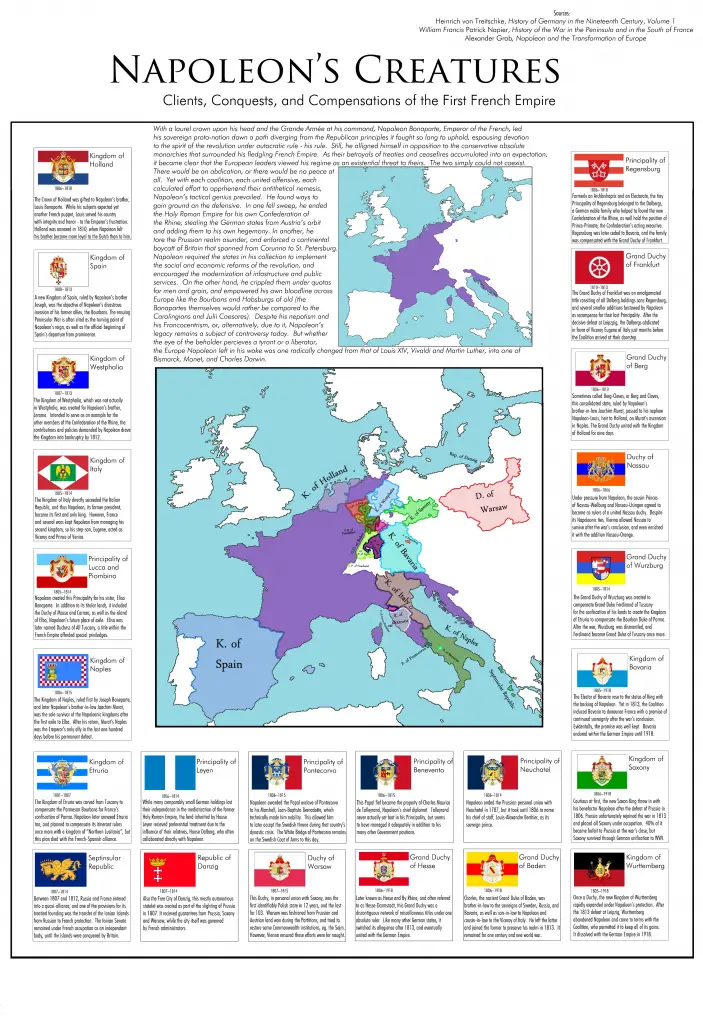
Kingdom of Holland (1806-1810)
The Crown of Holland was gifted to Napoleon’s brother, Louis Bonaparte. While his subjects expected yet another French puppet, Louis served his country with integrity and honor – to the Emperor’s frustration. Holland was annexed in 1810 when Napoleon felt his brother became more loyal to the Dutch than to him.
Kingdom of Spain (1808-1813)
The new Kingdom of Spain, ruled by Napoleon’s brother Joseph, was the objective of Napoleon’s disastrous invasion of his former allies, the Bourbons. The ensuing Peninsular War is often cited as the turning point of Napoleon’s reign and the official beginning of Spain’s departure from prominence.
Kingdom of Westphalia (1807-1813)
The Kingdom of Westphalia, which was not actually in Westphalia, was created for Napoleon’s brother, Jerome. Intended to serve as an example for the other members of the Confederation of the Rhine, the contributions and policies demanded by Napoleon drove the Kingdom into bankruptcy by 1812.
Kingdom of Italy (1805-1814)
The Kingdom of Italy directly succeeded the Italian Republic, and thus Napoleon, its former president, became its first and only King. However, France and several wars kept Napoleon from managing his second Kingdom, so his step-son, Eugene, acted as Viceroy and Prince of Venice.
Principality of Lucca and Piombino (1805-1814)
Napoleon created this Principality for his sister, Elisa Bonaparte. In addition to its titular lands, it included the Duchy of Massa and Carrara and the island of Elba, Napoleon’s future place of exile. Elisa was later named Duchess of All Tuscany, a title within the French Empire afforded special privileges.
Kingdom of Naples (1806-1815)
The Kingdom of Naples was ruled first by Joseph Boneparte, and later Napoleon’s brother-in-law Joachim Murat was the sole survivor of the Napoleonic kingdoms after the first exile to Elba. After his return, Murat’s Naples was the Emperor’s only ally in the last one hundred days before his permanent defeat.
Kingdom of Etruria (1801-1807)
The Kingdom of Etruria was carved from Tuscany to compensate the Parmesan Bourbons for France’s confiscation of Parma. Napoleon later annexed Etruria too and planned to compensate its itinerant rulers once more with a kingdom of “Northern Lusitania,” but this plan died with the French-Spanish alliance.
Septinsular Republic (1807-1814)
Between 1807 and 1812, Russia and France entered into a quasi-alliance, and one of the provisions for its treated founding was the transfer of the Ionian Islands from Russian to French protection. The Ionian Senate remained under French occupation as an independent body, until Britain conquered the islands.
Principality of Leyen (1806-1814)
While many comparably small German holdings lost their independence in the mediatization of the former Holy Roman Empire, the land inherited by House Leyen received preferential treatment due to the influence of their relatives, House Dalberg, who often collaborated directly with Napoleon.
Principality of Pontecorvo (1806-1815)
Napoleon awarded the Papal exclave of Pontecorvo to his Marshall, Jean-Baptiste Bernadotte, which technically made him nobility. This allowed him to later accept the Swedish throne during that country’s dynastic crisis. The White Bridge of Pontecorvo remains on the Swedish Coat of Arms to this day.
Republic of Danzig (1807-1814)
Also, the Free City of Danzig, this mostly autonomous statelet, was created as part of the slighting of Prussia in 1807. It received guarantees from Prussia, Saxony, and Warsaw, while French administrators governed the city itself.
Principality of Benevento (1806-1815)
This Papal fief becomes the property of Charles Maurice de Talleyrand, Napoleon’s chief diplomat. Talleyrand never actually set foot in his Principality but seems to have managed it adequately in addition to his many other Government positions.
Principality of Neuchatel (1806-1814)
Napoleon ended the Prussian personal union with Neuchatel in 1787, but it took until 1806 to name his chief of staff, Louis-Alexandre Berthier, as its sovereign prince.
Duchy of Warsaw (1807-1815)
In personal union with Saxony, This Duchy was the first identifiable Polish state in 12 years and the last for 103. Warsaw was fashioned from Prussian and Austrian land won during the Partitions and tried to restore some Commonwealth institutions, e.g. the Sejm. However, Vienna ensured these efforts were for naught.
Grand Duchy of Hesse (1806-1918)
Later known as Hesse and By Rhine and often referred to as Hesse-Darmstadt, this Grand Duchy was a discontiguous network of miscellaneous titles under one absolute ruler. Like many other German states, it switched its allegiance after 1813 and eventually united with the German Empire.
Grand Duchy of Baden (1806-1918)
Charles, the ancient Grand Duke of Baden, was brother-in-law to the sovereigns of Sweden, Russia, and Bavaria and son-in-law to Napoleon and cousin-in-law to the Viceroy of Italy. He left the latter and joined the former to preserve his realm in 1813. It remained for one century and one world war.
Principality of Regensburg (1806-1810)
Formerly an Archbishopric and an Electorate, the tiny Principality of Regensburg belonged to the Dolbergs, a German noble family who helped to found the new Confederation of the Rhine and hold the position of Prince-Primate, the Confederation’s acting executive. Regensburg was later ceded to Bavaria, and the family was compensated with the Grand Duchy of Frankfurt.
Grand Duchy of Frankfurt (1810-1813)
The Grand Duchy of Frankfurt was an amalgamated title consisting of all Dalberg holdings sans Regensburg, and several smaller additions bestowed by Napoleon as recompense for their lost Principality. After the decisive defeat at Leipzig, the Dalbergs abdicated in favor of Viceroy Eugene of Italy just months before the Coalition arrived at their doorstep.
Grand Duchy of Berg (1806-1813)
Sometimes called Berg-Cleves, or Berg and Cleves, this consolidated state, ruled by Napoleon’s brother-in-law Joachim Murat, passed to his nephew Napoleon-Louis, heir to Holland, on Murat’s ascension in Naples. The Grand Duchy united with the Kingdom of Holland for nine days.
Duchy of Nassau (1806-1866)
Under Napoleon’s pressure, the cousins Princes of Nassau-Weilburg and Nassau-Usingen agreed to become co-rulers of a united Nassau duchy. Despite its Napoleonic ties, Vienna allowed Nassau to survive after the war’s conclusion and even enriched it with the addition of Nassau-Orange.
Grand Duchy of Wurzburg (1805-1814)
The Grand Duchy of Wurzburg was created to compensate Grand Duke Ferdinand of Tuscany for confiscating his lands to create the Kingdom of Etruria to compensate the Bourbon Duke of Parma. After the war, Wurzburg was dismantled, and Ferdinand became Grand Duke of Tuscany once more.
Kingdom of Bavaria (1805-1918)
The Elector of Bavaria rose to the status of King with the backing of Napoleon. Yet in 1813, the Coalition induced Bavaria to denounce France with a promise of continued sovereignty after the war’s conclusion. Eventually, the promise was well kept. Bavaria endured within the German Empire until 1918.
Kingdom of Saxony (1806-1918)
Cautious at first, the new Saxon King threw in with his benefactor Napoleon after the defeat of Prussia in 1806. Prussia, unfortunately, rejoined the war in 1813 and placed all Saxony under occupation. 40% of it became forfeit to Prussia at the war’s dose, but Saxony survived through German unification to WWI.
Kingdom of Wurttemberg (1805-1918)
Once a Duchy, the new Kingdom of Wurttemberg rapidly expanded under Napoleon’s protection. After the 1813 defeat at Leipzig, Wurttemberg abandoned Napoleon and came to terms with the Coalition, who permitted it to keep all of its gains.
It dissolved with the German Empire in 1918.
Sources:
1. Heinrich von Treitschke, History of Germany in the Nineteenth Century
2. William Francis Patrick Napier, History of the War in the Peninsula and the South of France
3. Alexander Grab, Napoleon and the Transformation of Europe
Related post:
– Ephemeral states of the Russian civil war


